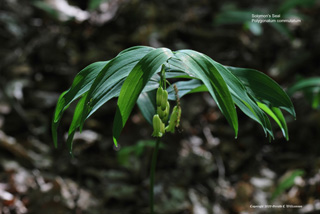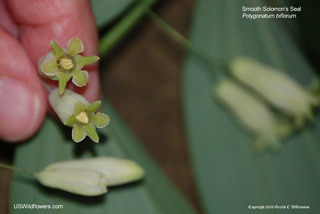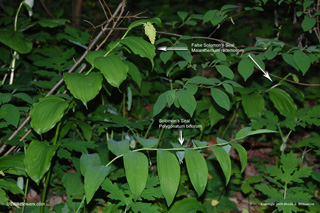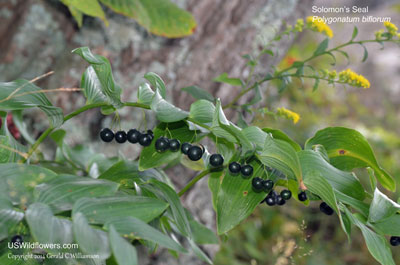Wildflowers of the United States | |||||||||||||
| |||||||||||||
Polygonatum biflorum - Smooth Solomon's Seal. Smooth Solomon's seal (P. biflorum) is 1 to 4 feet tall, arching, and is found in rich moist forests thoughout the eastern two-thirds of the United States and Canada. Similar species Hairy Solomon's seal (P. pubescens), has hairy veins on the underside of the leaf. | The name Solomon's Seal references the circular scars on the rhizome left by each year's flower stalk. I have not personally observed this, nor do I know what the seal of King Solomon looked like. Leave comments on Polygonatum biflorum at this link.   Blue=Native; Grey=Introduced Map from USDA Plants Database: USDA, NRCS. 2017. The PLANTS Database (http://plants.usda.gov, 08 May 2025). National Plant Data Team, Greensboro, NC 27401-4901 USA. Search Our Database: Enter any portion of the Scientific, Common Name, or both. Do a general Google search of the entire site: #ad #ad
|
| #ad
| | |||||||||
|
Commercial / Cookie Notice Looking for Wildflowers for a specific state? Check here: | |||||||||||||
|
| |||||||||||||





